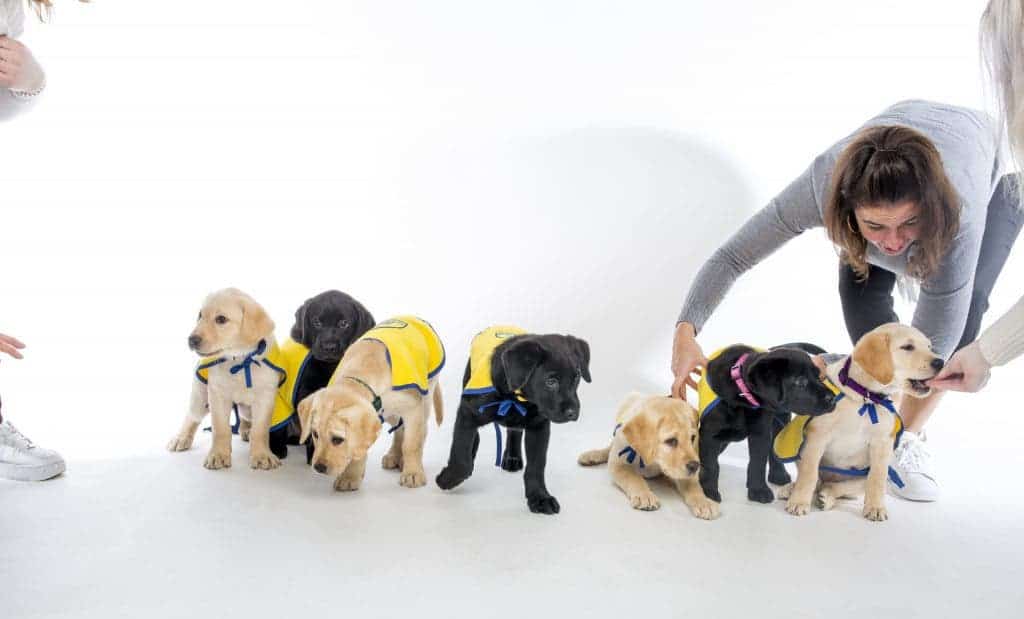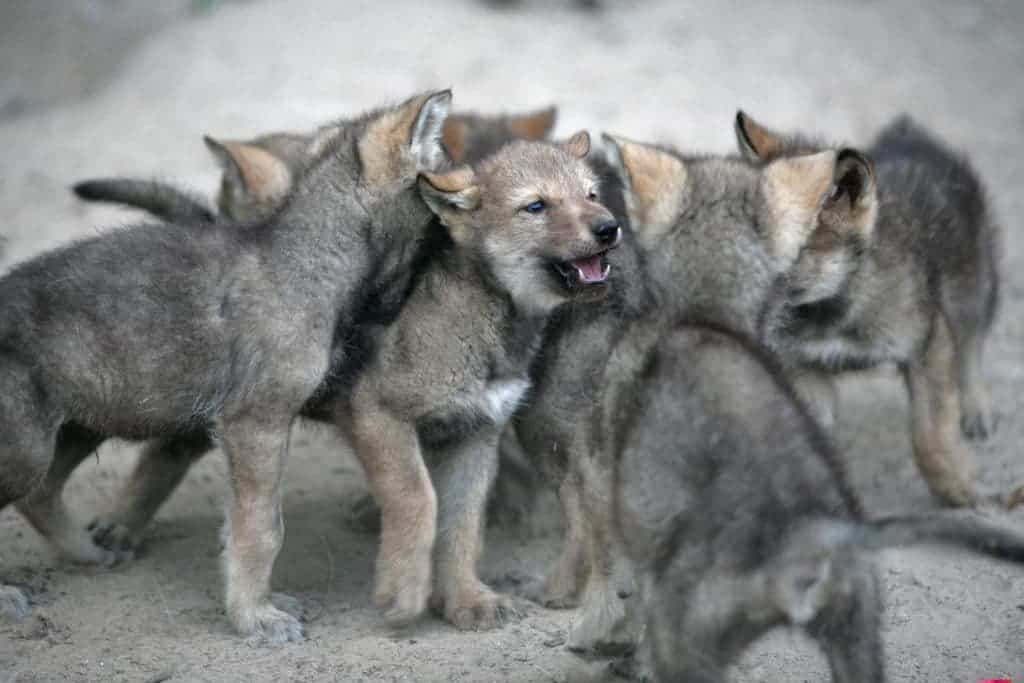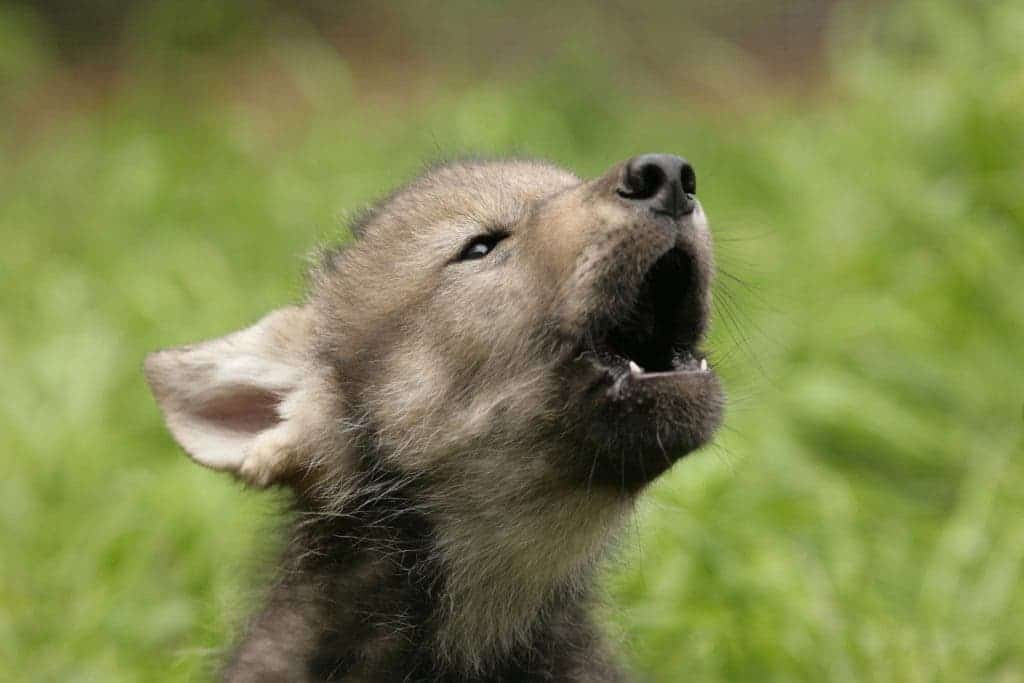
Dogs can understand and respond to human communication from a very early age and with virtually no training, unlike other domesticated species. You might not think much of it when you play fetch with your dog, but this simple act of communication and coordination is a pretty big deal from both a cognitive and evolutionary standpoint. This suggests that the strong bond between humans and dogs has led to co-evolved traits that have turned dogs increasingly social towards us. In a new study, researchers at Duke University argued in favor of this notion, after showing that wolf pups could not understand human gestures meant to help them find tasty treats, whereas dog puppies aced the test despite having no training.
“It was important to us to test puppies, not just adult dogs and wolves, because we wanted to see whether there is an innate species difference, which cannot be explained solely by learning over life experience,” Hannah Salomons, a doctoral student at Duke University, told ZME Science.
“The main finding of this study is that compared to wolf puppies, dog puppies have high levels of social skills that allow for cooperative communication, such as understanding that a human gesture is meant to help them find hidden food. The dog puppies were also far more attracted to humans, and would approach both strangers and familiar people more often than the wolf puppies. However, on non-social tasks, the dog and wolf puppies performed similarly,” she added.
The gestures of domestication

Dogs and wolves share close ancestors and researchers have been studying their similarities and differences for years, hoping to deconstruct the origins of canine domestication. Previously, scientists had compared dog and wolf social abilities, showing that dogs seem to have an innate ability to respond to human-given cues such as pointing gestures whereas wolves need special training.
The new research at Duke University is similar in scope to other studies, but with a much higher sample size of cute puppies and adorable pups. While other studies used at most 12 puppies of each species, this time the researchers worked with three dozen puppies per species, which offers much better confidence in the statistical significance of the findings. The wolf young were also genetically tested in order to confirm that the puppies were indeed wolves and not some dog hybrid, something no previous such study verified before.
The 37 wolf puppies were raised at the Wildlife Science Center in Minnesota where they were surrounded and cared for by humans almost round the clock. But despite the ubiquity of human interaction, the wolf pups were still very shy and would only come out of hiding when in the presence of caretakers they knew well. In contrast, the 44 puppies from Canine Companions for Independence spent most of their time in the company of their mothers and littermates and had minimal human contact when they were enrolled in this study.
“Being able to test such a large sample of wolf puppies was a huge undertaking, that took our team over six years to complete – only a few litters are born at Wildlife Science Center per season, and despite being raised by humans round-the-clock from just a few days old (which, I should note, is part of WSC’s typical husbandry practice, not done for the purpose of this study, and is a huge feat in and of itself), some of the wolf puppies are so shy around people that they never warm up to the experimenter enough to participate in the study. I have some great memories of sitting in the wolf pup enclosure for hours at a time, seeing them go from hiding when I first entered to frolicking and playing as they acclimated to my presence, and being rewarded with one pup dragging over a nice ripe piece of deer carcass (her favorite food) to sit next to me and gnaw on!” Salomons said.
In order to assess their communication skills, the young canids were pitted against each other in a series of tests. During one such task, the dog and wolf puppies had to find a treat hidden beneath one of two bowls. To help them out, the researchers pointed and gazed towards the correct location of the stashed food. In other tasks, a human planted a small wooden block beside the right spot to indicate where the food was hidden, a gesture that neither of the two types of pups had seen before.
The results spoke for themselves. Despite their lack of formal training, 17 out of 31 dog puppies consistently went to the right bowl, whereas none of the human-reared wolf pups performed better than a coin toss. Subsequent trials showed that the puppies were guided by human gestures rather than the odor of food.
Many of the puppies completed their trials on their first go, which suggests that this remarkable ability is hard-wired in the dogs’ brains. But that’s not to say that dogs are smarter than wolves. Chimps, our closest relatives along with bonobos, can’t read human gestures, although they’re much better than dogs at complex cognitive tasks.
All pups are good boys and girls

Evolution does not produce species that are ‘better’ or ‘worse’ than others but rather fosters species that are most adapted to their environment. Both canids have more or less the same cognitive abilities in terms of memory and motor impulse control. It’s just that puppies have much better people skills due to their close proximity to our species for thousands of years.
Emily Bray of the University of Arizona and colleagues showed in a 2021 study that puppies as young as eight weeks can understand instructions from humans, such as finger-pointing and gazing towards an object. This study found that 40% of the variation in a puppy’s ability to follow a human’s finger-pointing or gaze can be explained genetically, which makes sense in light of other findings. We know from previous research that breeds of dogs that were initially selected for cooperative work (like sheepdogs) are much better at following a person’s point than breeds selected for other kinds of work like guard dogs, hounds, or sled dogs).
This familiarity and strong bond with humans is perhaps best evidenced by how wolf and dog puppies differ in the way they respond to strangers. Tests showed that dog puppies were 30 times more likely to approach a stranger than the shy wolf pups.
Previously, researchers in Austria and Hungary also assessed wolf and dog pups’ ability to follow human gestures. They found that dogs as young as four months of age understand pointing gestures to find hidden food even without intensive early socialization. Wolf pups, on the contrary, do not attend to this subtle pointing. Interestingly, this particular study found that wolves socialized at a comparable level to dogs are able to use simple human-given cues spontaneously if the human’s hand is close to the baited container (e.g. touching, proximal pointing). The wolves also responded to gestures pointing to objects at a distance if they received formal training. This isn’t that surprising considering how closely related the two species are, but the effects of domestication on people’s skills are quite striking.
“The evidence from this study along with many others makes it very clear that dog puppies can understand humans’ cooperative communicative gestures from a young age, without any explicit training or intensive human experience,” Salomons said.
“As for why other domesticated animals may not show the human-like cooperative communicative ability seen in dogs, this is likely to be constrained by the pre-existing social cognitive abilities of their wild predecessors. As wolves already had fairly complex social skills, as the domestication process progressed and an attraction to humans replaced fear, they were able to apply these skills in new ways and they began to emerge earlier in development. Other species, such as the wild predecessors of sheep or cattle, may not have had similar starting levels of social skills for the domestication process to shape. Even so, evidence is coming out that in other species, such as ferrets, domesticated populations do outperform wild populations at reading human gestures!”

According to Salomons, these findings show that domestication, by selecting for attraction to humans, altered dogs’ social development, resulting in the remarkable cooperative-communicative abilities we see today. Scientists aren’t exactly sure how all this happened, but perhaps it all started with a few wolves that were unusually friendly towards humans and that received food scraps in return for their non-aggressive behavior. Over time, wolves that were friendly towards humans had a better chance of reproducing and passing on their ‘tamed’ genes whereas wolves that were fearful and aggressive towards humans stayed to themselves. After hundreds of generations, this common ancestor speciated into Canis familiaris, the faithful canine we all love and cherish.
“This knowledge is important because understanding how dogs’ minds are wired can help us learn to communicate with them better and work together as a stronger team. Also, a similar process, known as self-domestication, may have occurred over the course of human evolution as well, so understanding its effects may shed light on the development of our own minds,” Salomonds concluded.
In the future, the researchers plan to perform a longitudinal study that charts the temperament and performance of individual puppies on social and non-social cognitive tasks to see how these different cognitive aspects develop and change over time and how they interact with one another.
The findings appeared in the journal Current Biology.


